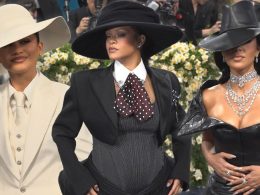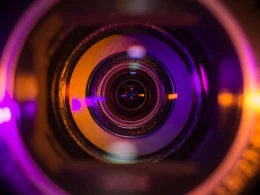Introduction
In the ever-evolving landscape of the music industry, music video production continues to play a crucial role in the promotion and artistic expression of musical works. As we approach 2024, several key trends are emerging that promise to shape the future of music video production. This article explores these trends, offering insights into how artists, directors, and producers can stay ahead of the curve.
Immersive Technologies: AR and VR

One of the most significant trends in music video production for 2024 is the increased use of immersive technologies such as Augmented Reality (AR) and Virtual Reality (VR). These technologies allow for the creation of highly engaging and interactive experiences, transforming traditional music videos into immersive journeys.
AR is being used to overlay digital elements onto the real world, creating a blended experience that enhances the visual storytelling of a music video. For example, viewers can use their smartphones or AR glasses to see additional visual elements that complement the music video being played on their screens.
VR, on the other hand, offers a fully immersive experience by placing viewers in a virtual environment where they can interact with the music video in a 360-degree space. Artists are leveraging VR to create unique and memorable experiences that allow fans to feel as if they are part of the video itself.
AI and Machine Learning in Music Video Production

Artificial Intelligence (AI) and Machine Learning (ML) are revolutionizing various industries, and music video production is no exception. In 2024, we can expect to see AI being used to streamline the production process, enhance creativity, and personalize viewer experiences.
AI-powered tools can assist in various stages of production, from scriptwriting and storyboard creation to editing and special effects. For instance, AI algorithms can analyze a song’s mood and tempo to suggest visual themes and elements that match the music. Additionally, AI can be used to generate realistic visual effects that would be time-consuming and expensive to create manually.
Machine learning algorithms can also be employed to analyze viewer preferences and tailor music videos to individual tastes. This level of personalization can help artists and producers create content that resonates more deeply with their audience.
Sustainability in Music Video Production

As the world becomes increasingly conscious of environmental issues, sustainability is becoming a key consideration in music video production. In 2024, we can expect to see a greater emphasis on eco-friendly practices and materials.
Producers are exploring ways to reduce the carbon footprint of their productions by using renewable energy sources, minimizing waste, and opting for virtual sets instead of physical ones. Additionally, there is a growing trend towards using recycled and biodegradable materials for costumes, props, and set designs.
Sustainable production practices not only benefit the environment but also enhance the reputation of artists and production companies, appealing to environmentally-conscious audiences.
Short-Form Content and Social Media Integration

The rise of social media platforms like TikTok, Instagram, and Snapchat has led to a growing demand for short-form content. In 2024, music video production is likely to focus more on creating bite-sized videos that can be easily shared and consumed on these platforms.
Artists are increasingly releasing teaser clips, behind-the-scenes footage, and short music videos to engage with their audience on social media. These short-form videos are designed to capture attention quickly and encourage viewers to explore the full-length music video or song.
Moreover, social media integration is becoming a key strategy in music video production. Interactive features such as polls, challenges, and live streaming are being incorporated into music videos to foster a sense of community and engagement among fans.
Diversity and Inclusion in Music Video Production

Diversity and inclusion have become essential aspects of the entertainment industry, and music video production is no exception. In 2024, we can expect to see a greater emphasis on representing diverse voices and stories in music videos.
Artists and producers are making conscious efforts to include people of different races, genders, sexual orientations, and abilities in their videos. This trend not only reflects the diverse nature of audiences but also promotes social awareness and acceptance.
Inclusive casting, storytelling, and production practices are helping to break down barriers and create a more equitable and representative industry.
Collaborative and Cross-Genre Projects

Collaboration is a powerful trend that is shaping the future of music video production. In 2024, we can expect to see more collaborative projects that bring together artists, directors, and creatives from different genres and backgrounds.
Cross-genre collaborations are becoming increasingly popular, allowing artists to experiment with new sounds and visual styles. These projects often result in innovative and groundbreaking music videos that push the boundaries of traditional genres.
Additionally, collaborations between artists and brands are on the rise, with music videos being used as a platform for creative partnerships and brand endorsements. These collaborations offer new opportunities for funding and exposure, benefiting both artists and brands.
Conclusion
As we look ahead to 2024, the trends in music video production are set to transform the way we create and consume music videos. Immersive technologies, AI and machine learning, sustainability, short-form content, diversity and inclusion, and collaborative projects are all playing a crucial role in shaping the future of the industry.
By staying informed about these trends and embracing new technologies and practices, artists, directors, and producers can continue to create compelling and innovative music videos that captivate audiences and drive the music industry forward.









